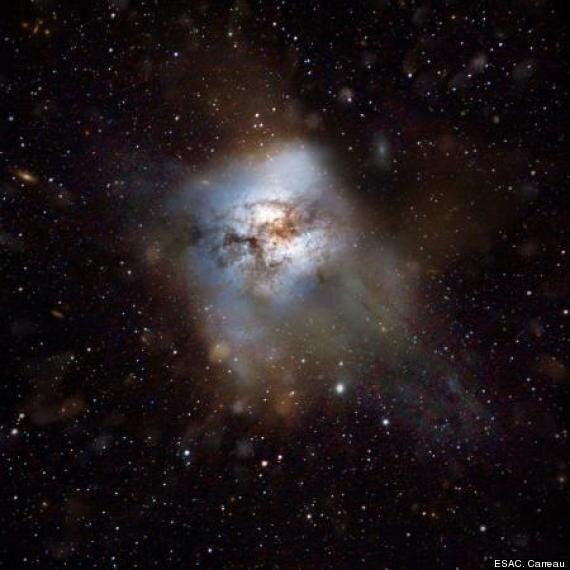A galaxy capable of producing 2,900 suns a year is confounding scientists by being 620 million years younger than expected.
Massive star factories - named 'starburst' galaxies - are formed when a number of smaller galaxies merge together.
This process takes a long time, and it was thought the earliest starburst galaxies that could form would be around 1.5 billion years after the big bang.

An artist's impression of HFLS3
The newly discovered galaxy, HFLS3, started to produce stars at an extraordinary rate at the tender age of just 880 million years young.
Astronomers from the California Institute of Technology (Caltech) made the discovery when sifting through data from the Herschel Multi-tiered Extragalactic Survey (HerMES).
Lead researcher, Dominik Riechers, said: "massive, intense starburst galaxies are expected to only appear at later cosmic times.
"Yet, we have discovered this colossal starburst just 880 million years after the Big Bang, when the universe was at little more than 6 percent of its current age."
Stars are formed amongst the dust clouds scattered within galaxies. As clumps of gas and dust gather they gain mass, eventually collapsing in on themselves and eventually combusting into a giant nuclear fusion reactor.
The find is not forcing astronomers to rethink current theories of galaxy formation - yet. If more are found then they may have to go back to to drawing board, or rather the massively complex data set, and start again.
Jamie Bock, professor of physics at Caltech, said: "This galaxy is just one spectacular example, but it's telling us that extremely vigorous star formation was possible early in the universe."
HerMES detected thousands of galaxies but HFLS3 stood out as it was particularly red.
We'll let Caltech take it from here:
The object's redness meant that its light was being substantially stretched toward longer (and redder) wavelengths by the expansion of the universe. The more distant an object, the more its light is stretched, and so a very red source would be very far away.
The only other possibility would be that—because cooler objects emit light at longer wavelengths—the object might be unusually cold; the astronomers' analysis, however, ruled out that possibility. Because it takes the light billions of years to travel across space, seeing such a distant object is equivalent to looking deep into the past.
Further examination using observatories in Hawaii and California determined the chemical composition of the galaxy.
Caltech plan more research to determine how common such galaxies are.